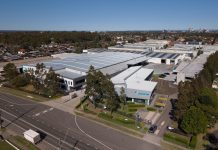A team of researchers from the Queensland University of Technology (QUT) is investigating how we will move from point A to point B by 2030 and what will “the vehicles that take us there” look like.

The QUT researchers are canvasing the opinion of more than 200 experts throughout Australia, Indonesia, Malaysia and Thailand, asking them what vehicle options they forecast will exist 15 years from now in the Asia-Pacific Region.
The QUT research team, which is led by Professor Simon Washington, Associate Professor Robert Perrons, Professor Lionel Page and Dr Zuduo Zheng, is also asking 6000 residents in those regions what vehicles they would purchase in the future.
According to the news release by QUT, experts from academia, industry and government will be recruited to answer one of two surveys for the AutoCRC project.
Professor Perrons, from QUT Business School, said cars, trucks and motorcycles would likely remain to be the main means of transportation throughout the Asia-Pacific region into the near future.
“But many aspects of our world and the global marketplace are changing, so it follows that the vehicles of the future will probably have to change in several important ways too. First, advances in technology are constantly opening up new opportunities for improving efficiency and performance,” he said.
“Second, increasingly urgent calls to reduce carbon emissions will likely have a growing influence on the vehicle market. And third, the world’s energy mix will probably undergo significant structural changes as markets and policymakers wrestle with how to deliver energy to an increasing global population with steadily rising living standards.”
Professor Perrons said the survey results would provide vital information about the “forces of change and trends” that would shape the future of transportation.
“Our goal is to improve our collective understanding of these trends within a subset of countries in the region and what they mean for the future of vehicles and mobility in this part of the world,” he said.
“These insights will, in turn, be valuable as policymakers and ‘thought leaders’ in universities and companies around the world think about these industries and the organisations, people, and infrastructure that are connected to them.”

















